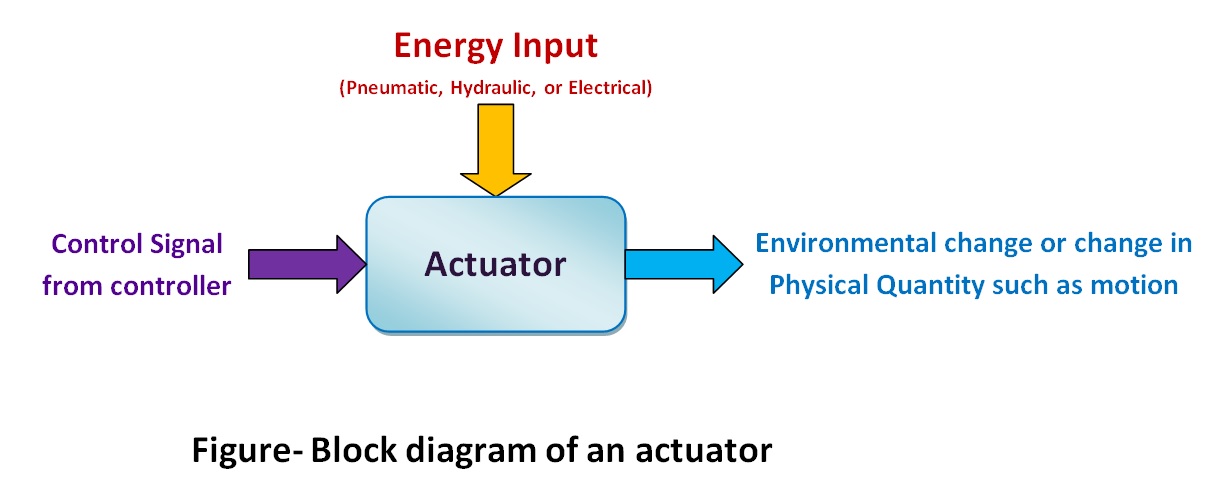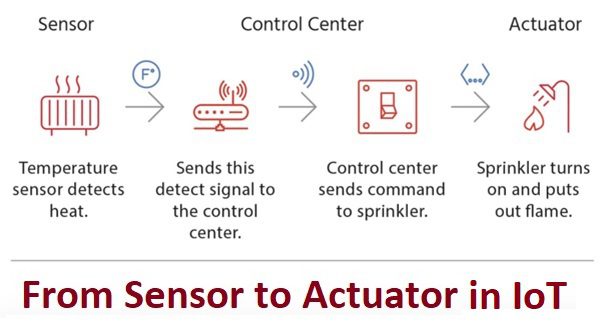Table of Contents
Introduction-
यद्यपि सेंसर और एक्चुएटर (Sensor and actuator) अक्सर under same process application में पाए जाते हैं अर्थात equipment and systems within industries में और often परस्पर interact भी करते हैं, फिर भी वे दो अलग-अलग घटक हैं। उन्हें अक्सर एक दूसरे के complementary कहा जाता है और यह ensure करने के लिए एक साथ काम करते हैं कि Different assets और process effectively काम कर रही हैं। एक लाइन में कहे तो सेंसर डिटेक्टर होते हैं जबकि एक्चुएटर्स मूवर होते हैं। दोनों Process control units और conditional maintenance में महत्वपूर्ण भूमिका निभाते हैं।
What are sensors?
सेंसर ऐसे उपकरण हैं जिनका उपयोग monitoring और control के उद्देश्य से physical quantities, events या characteristics को Electric signals में परिवर्तित करने के लिए किया जाता है। तो सेंसर environment से input लेता है और Electric रूप में परिवर्तित होता है और फिर System या controller को feed किया जाता है। सेंसर input device की तरह काम करता है। उदाहरण के लिए- Thermocouple, Photo Cell, RTD, LVDT, Strain Gauge, Load cell आदि। सेंसर के लिए एक block diagram नीचे दिखाया गया है-

What are Actuators?
दूसरी ओर एक्चुएटर ऐसे उपकरण हैं जो प्राप्त control signal (जो Electric form में हो सकता है) के अनुसार source energy को परिवर्तित करके environment को physical quantities (जैसे force or motion) प्रदान करते हैं । यहां source energy वायवीय, हाइड्रोलिक या Electric प्रकार हो सकती है और गति (एक्चुएटर द्वारा) या तो रैखिक या रोटरी हो सकती है। एक्चुएटर output device के रूप में कार्य करता है। उदाहरण के लिए- different types of electric motor actuator, heaters, electro pneumatic actuator, electro-hydraulic actuator, magnetic actuator इत्यादि। एक्ट्यूएटर का एक block diagram नीचे दिखाया गया है-





Difference between sensor and actuator
सेंसर और एक्चुएटर्स के बीच तुलना तालिका में दिखाई गई है-
| Sr. No. | Sensor | Actuator |
| 1 | सेंसर physical quantities और characteristics को Electric signals में परिवर्तित करता है। | एक्चुएटर Electric signals को physical क्रिया जैसे बल और गति में परिवर्तित करता है। |
| 2 | यह किसी भी control system में input device के रूप में कार्य करता है और input port में रखा जाता है| | यह control system में output device के रूप में कार्य करता है और output port में रखा जाता है| |
| 3 | सेंसर environment से input लेता है और surrounding conditions को sense करता है। | एक्चुएटर System के output signal conditioning यूनिट से input लेता है। |
| 4 | सेंसर Electric रूप में परिवर्तित करने के लिए System की input signal conditioning unit को output देता है। | यह environment को output देता है और parameter को control करने के लिए load पर impact डालता है। |
| 5 | यह monitoring और control के लिए System को environment की situation के बारे में जानकारी देता है। | यह फिजिकल एक्शन देने के लिए System से कमांड स्वीकार करता है। |
| 6 | सेंसर का उपयोग अक्सर process pressure, temperature, fluid levels, flow, vibration, speed आदि को मापने के लिए किया जाता है। | एक्ट्यूएटर्स का उपयोग अक्सर control valves, dampers, guide vanes, and to move objects from one place to another, to move conveyor belts in robotic arms movement आदि में किया जाता है। |
| 7 | Sensor examples- Thermocouple, photo cell, RTD, LVDT, strain gauge, Load cell, hall sensors, differential flow meters, speed probes, PH meter etc | Actuator examples- motor actuator, servo motor, stepper motor, heaters, electro pneumatic actuator, electro-hydraulic actuator, magnetic actuator etc |
Sensors and actuators in Iot
इंटरनेट ऑफ थिंग्स को एक ऐसे paradigm के रूप में परिभाषित किया गया है जिसमें सेंसर, एक्चुएटर और प्रोसेसर से लैस वस्तुएं एक सार्थक उद्देश्य की पूर्ति के लिए एक दूसरे के साथ communicate करती हैं। IoT को केवल physical और digital world के बीच interaction के रूप में भी देखा जा सकता है। stand-alone device और application में अब sensors, actuators, processors and transceivers के माध्यम से network से जुड़ने की क्षमता है।
इंटरनेट ऑफ थिंग्स (आमतौर पर IoT के रूप में जाना जाता है) several technology layers से बना है जो ordinary things को data share करने में सक्षम बनाती हैं। वे ultimately deliver intelligence, autonomous actions and valueप्रदान करने के लिए इंटरनेट पर जानकारी एकत्र करते हैं जो काफी हद तक data की quality पर निर्भर करता है। एक IoT device मूल रूप से एक Physical object (things) + Controller (brain) + Networks (Internet) के साथ-साथ सेंसर और एक्चुएटर से बना होता है। सेंसर और एक्ट्यूएटर ऐसे उपकरण हैं जो IoT तकनीक में physical world के साथ interaction को सक्षम करते हैं। निम्नलिखित diagram दिखाता है कि एक सेंसर और एक्चुएटर एक साथ कैसे काम करते हैं-





यहां मूल रूप में, device में sensor environment को sense करते हैं और controller को feed किया जाता है, फिर set value के आधार पर, एक्ट्यूएटर के लिए set value बनाए रखने के लिए आवश्यक क्रियाओं को करने के लिए control signal उत्पन्न होता है। ऐसा control signal एक्चुएटर को भेजा जाता है जो mechanism या system को move या control करता है। यह ध्यान दिया जाना चाहिए कि एक एक्चुएटर को क्रिया करने के लिए external energy की आवश्यकता होती है।





IoT में सेंसर से एक्चुएटर flow के लिए एक diagram दिखाया गया है। sensor, actuator, computer servers और communication network एक IoT framework के core infrastructure का निर्माण करते हैं। Data collection, handling, communication, and processing IoT तकनीक के तहत किया जाता है। IoT device विभिन्न सेंसरों से बड़ी quantities में जानकारी एकत्र करता है, और यह निर्णय लेने के माध्यम से तय किया जा रहा है कि कौन सा डेटा उनकी स्थिति के लिए relevant है और इसे किन स्थानों पर processed or stored किया जाना है, साथ ही साथ कौन सा communication level वांछित है, जबकि actuators relevant information processing के लिए System के automation को सक्षम बनाता है।
Read About “Internet of things (IoT)” – Wikipedia link